King of the castle: The story behind the server-smashing success of Fall Guys
The journey to creating 2020's feel-good hit didn't come without its own set of hurdles and bumps
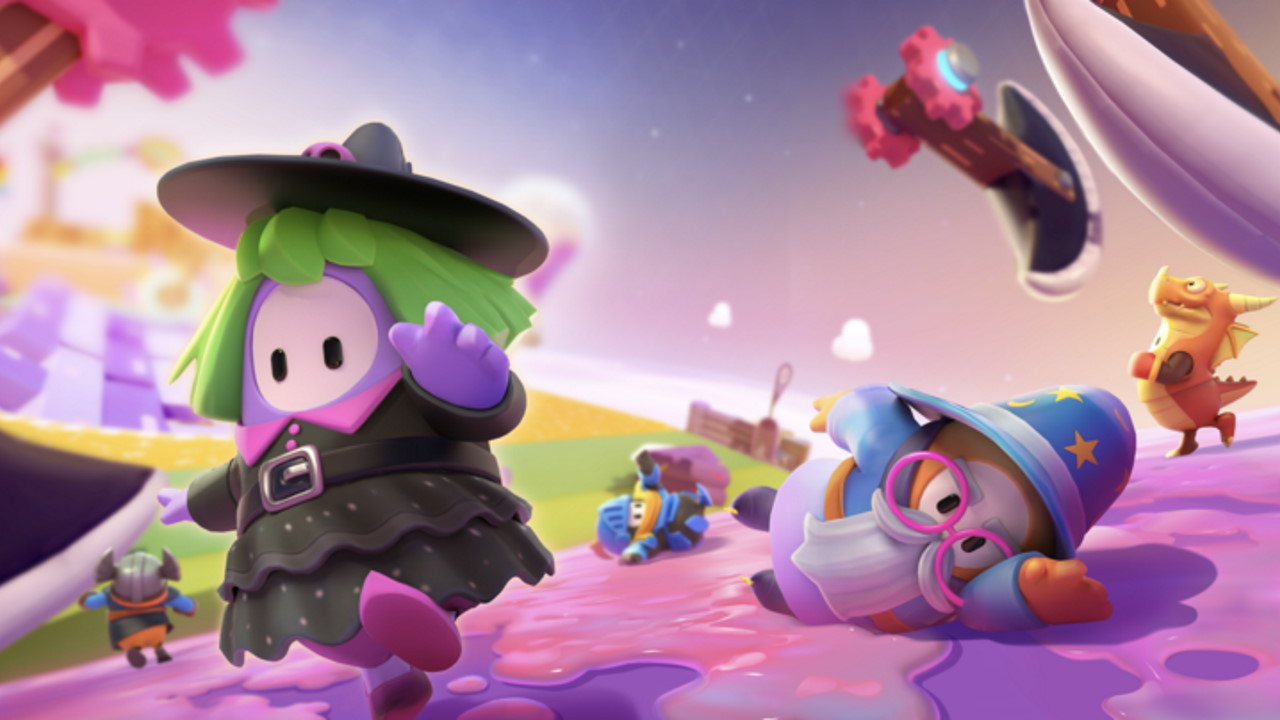
When Joe Walsh sent the pitch document for Fall Guys: Ultimate Knockout to his boss at Mediatonic in January 2018, PlayerUnknown's Battlegrounds was already a massive hit. Fortnite was just into its second season and in the process of going supernova. The battle royale genre, in other words, was taking off. And yet Walsh never thought of his game idea as some kind of Fortnite killer.
"We were actively trying to avoid pitching battle royales for risk of becoming a flavour-of the- month kind of thing," he says. Rather, he and his colleagues had been thinking of a new kind of multiplayer game – "something that didn't feel overly competitive or toxic or intimidating." The discussion turned to the idea of a large scale PvE experience, before someone suggested a game show theme. "It was PvE, it was almost like a bit of a Roguelike, and then the penny dropped and we were like, 'Oh my god, Takeshi's Castle is massively multiplayer obstacle courses!'"
Walsh and his team realised the battle royale format fit the idea well, but it was different enough from those two big hitters to stand out. The concept seemed to naturally bring together elements of a range of games that the development team already loved: "Very, very quickly we thought: it's a bit like Mario Party, it's a bit like Gang Beasts and Human Fall Flat. It had the DNA of so many games and it all seemed to fit." It was so obvious, he says, he couldn't believe no one had made it yet. "We had to start immediately. Otherwise someone was going to beat us to the punch."
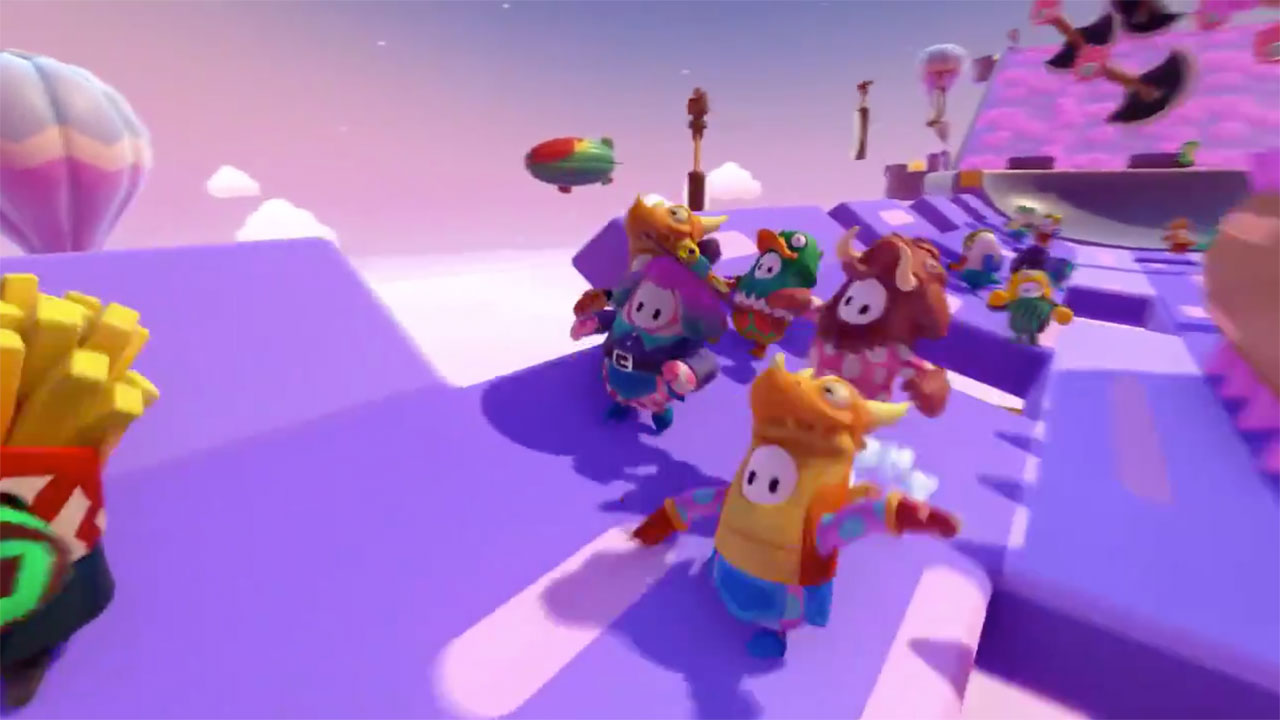

If you want more great long-form games journalism like this every month, delivered straight to your doorstop or your inbox, why not subscribe to Edge here.
The Takeshi's Castle inspiration became so ingrained in the game that Walsh knew Fall Guys would need to whittle players down. "There's something so exciting about being part of that final few," he says. But if the studio was going to make a battle royale game, it needed to be fresh and accessible. "We diluted things slightly – you know, in some of our gauntlet levels, you can respawn if you fall off, and to begin with, it was much more hardcore."
Well, Takeshi's Castle is pretty hardcore, we suggest; one mistake and you're out. "Yeah, exactly. That's it, just like a real battle royale. And that was the initial pitch. But when we started talking about who this game might appeal to, we started to ease up on that a little bit and started talking about respawning and making it a little bit fairer. If you look at levels like Slime Climb – that last bit where people can start pushing each other off? The whole game would have essentially been like that. And I think it would have been a little scary."
At the same time, the ability to knock other players over and to shove them around is a huge part of Fall Guys' appeal. Balancing that, Walsh says, to encourage occasional cruelty without actively incentivising it, was one of the most challenging parts of development.
"We knew that we wanted some shenanigans in the game," he says. "Like when you watch something like Total Wipeout, there's always that one competitor who insists on grabbing other people and slowing them down and climbing over them, and they always become the villain of the piece." If there wasn't some way to affect other players, he says, the narrative of each match would have been less compelling. "It would just feel like you're speedrunning ghosts that have no real impact on each other other than colliding. And so it felt really important to us that you could meaningfully impact the experience of another player."
Sign up to the GamesRadar+ Newsletter
Weekly digests, tales from the communities you love, and more
Falling upwards
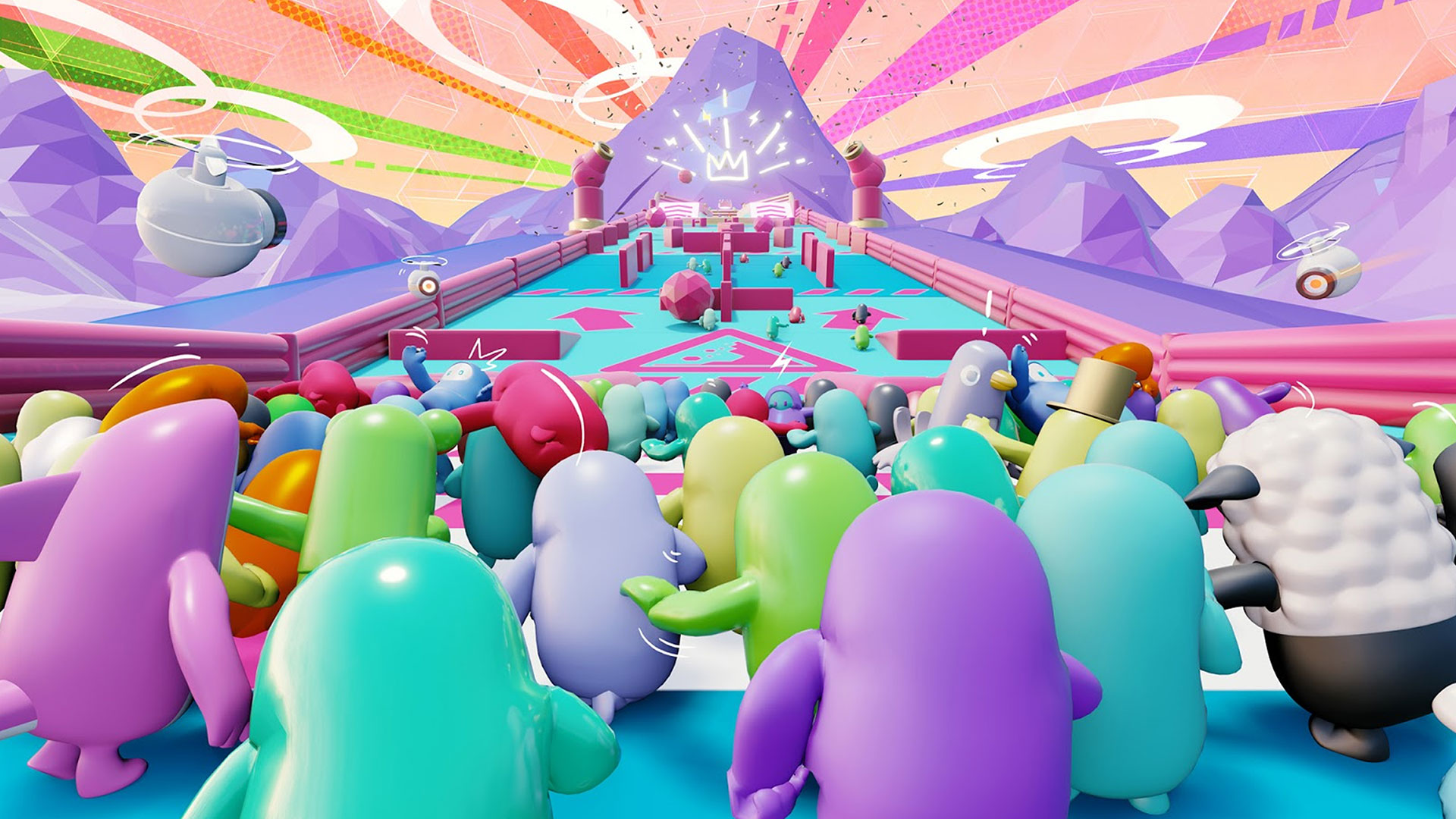
Nevertheless, the team had a lot of discussions about turning it off entirely, to make for a friendlier multiplayer experience. But the more they looked at it, the more they realised that it was funnier to keep in the grab mechanic, and to let players bump one another out of contention. "It just felt like there were so many funny stories to be told. That temptation to suddenly join the dark side really does run through the game. And the funniest moments we've seen are these, like, karmic reactions where someone tries to grab another player and messes it up and falls off. All of those stories felt so key to what we were trying to do to Fall Guys that we wanted to keep it in."
But even as late as a week before the game's full launch, Mediatonic made significant adjustments. The game's beta period proved crucial, as the team watched their players' behaviour and realised they were perhaps encouraging griefers a little too much. "We made some pretty big nerfs to the duration that you could grab onto people for and how long you got stuck," Walsh says. "It was skewed a little too far towards rewarding people who were being cheeky and not enough the players who just wanted to get on with it and play."
The physicality of its jellybean characters was another crucial factor. If the game at times feels like a group of rumbustious toddlers bumping into one another in a soft play area, that's entirely deliberate. "Their sole purpose is to catapult themselves through these game shows that they have absolutely no business being there for," artist Rob Jackson says. "They're completely unprepared physically, they don't have any skills – but it doesn't matter, they just love it and they totally go for it. And all of the art basically evolved from that."
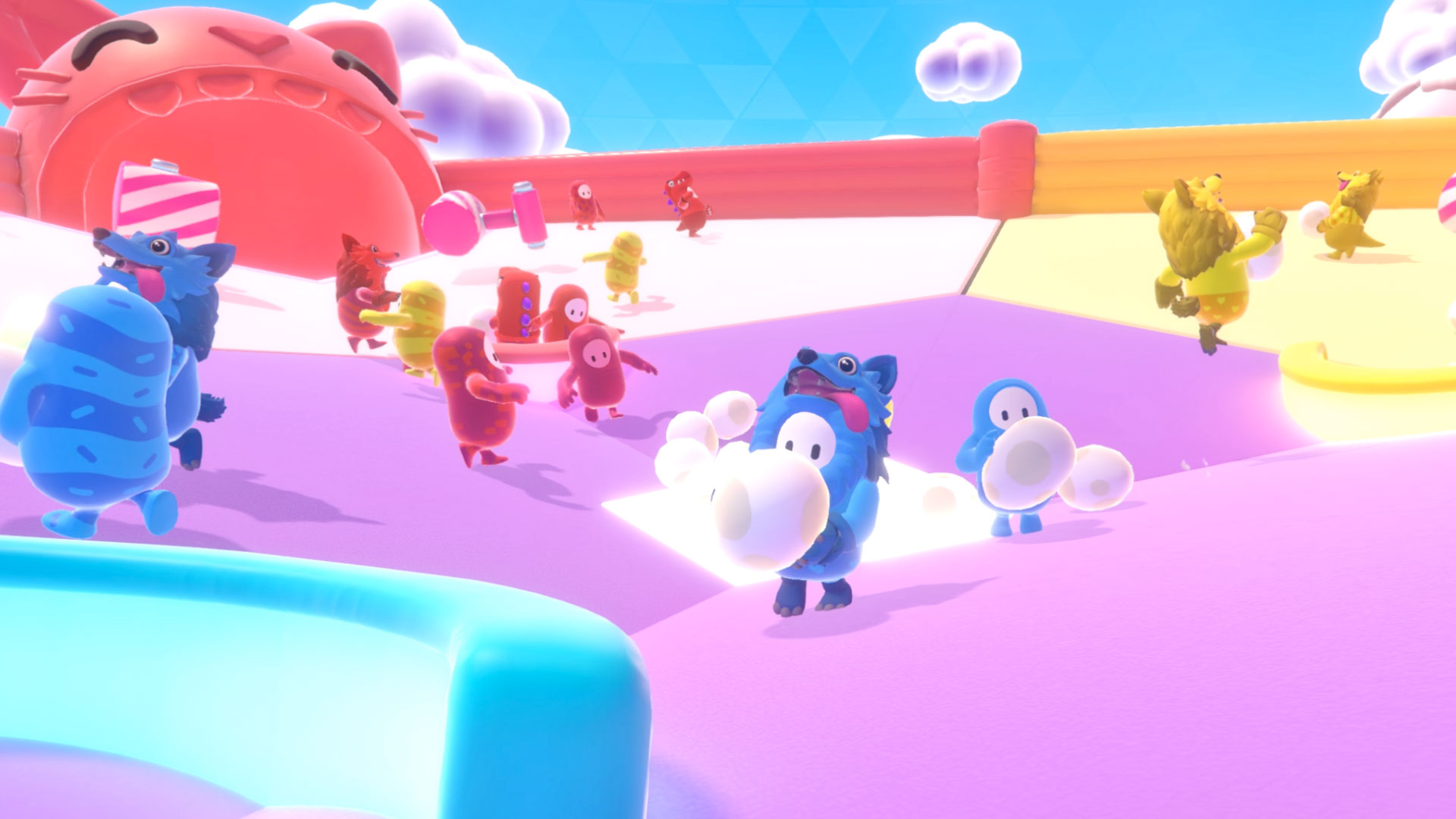
The Fall Guys might be designed to be clumsy and bump into objects and one another, but Jackson says it was important to make them feel like they weren't coming to any harm; to capture the idea of children falling over, jumping up with a laugh and running off again.
"That's why their bodies have a vinyl padding over them to protect them from impacts," Jackson adds. "The same goes for the levels themselves – as a parent myself, I've spent lots of time in bouncy houses and whenever I pictured the idea for the game, all I could see was my children barrelling down a big inflatable slope. So I pushed for everything to be covered in nice, soft, padded vinyl wrapping or for everything to feel like it might be constructed out of toy-like play blocks with that nice plastic feel to them."
There's a sense of chaos baked into the way they control, too, although not too much. "Early on, the characters fell over a lot more and did weird things that you didn't expect. And what we found, ultimately, was that the game is too competitive to have a character that you can't trust," Walsh explains. "When you press jump, the character needs to jump. And if they fall over, you should kind of understand why it happened."
It's not exactly Mario in terms of fine control, but you can move your Fall Guy with reasonable fidelity, guiding them carefully around objects without too much inertia. But when you jump, all bets are off.
"You basically cross your fingers and hope that you land smoothly again, and that was where we started to introduce lots of fun stuff," Walsh says. "We basically started by building a huge library of GIFs from our favourite game shows. And a lot of the moments that made us laugh the most are the moments where someone's legs get swept from underneath them or they jump in the air and something makes them land off-kilter, and then they careen off into something else."
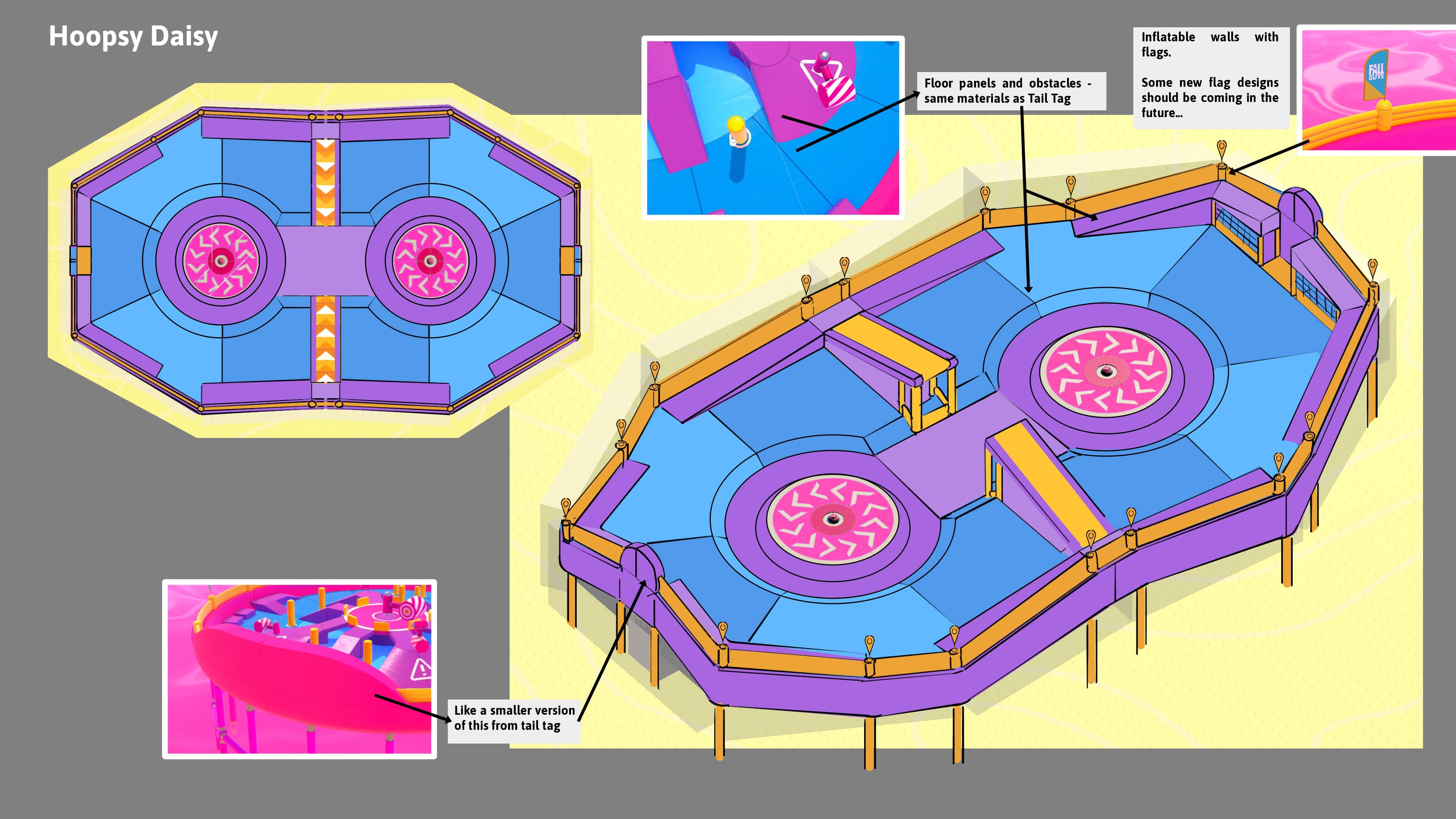
These frequent pratfalls, those underhand tactics and the overall sense of competitive chaos are all reasons why Fall Guys instantly became a huge hit on Twitch (along with the significant weight of Mediatonic and Devolver Digital behind it). Walsh isn't surprised by that; he says that the game was eminently watchable from the early stages of development, and that came organically from its televisual influences.
"We wanted to make sure that the framework of a show of Fall Guys matched that of a show of Takeshi's Castle," he says. "And when we looked at the level designs, it was very important to us that the levels should not just be fun to play, but also fun to watch. There are some levels that might not have made it if we hadn't included that – something like Tiptoe I think really comes alive when you're watching someone else play and you can see they've made a mistake and you start screaming at your Twitch channel for them to turn back or go left or right."
As development continued, comedy became a primary focus: each iteration of a Fall Guys game needed to be funnier than the last. "We would start by putting an obstacle in the game and run at it, and then see how the current character responded to being hit by it. And if it made us laugh more than last time, that became our new benchmark for what we needed to do."
The physicality of the characters played as important a part as the level design, as the team made them more reactive to failure. Dive for a ledge and miss it, and your avatar will flip backwards. Mistime a jump up some steps, and they'll invariably topple forward because they're so top-heavy. "Essentially, a lot of development was identifying what was funny and then making sure that the character could do that," Walsh says. "Making sure they feel floppy and jelly-like was a big part of it, too – there's something innately hilarious about that, I think. And Fall Guys wouldn't work if we didn't have it."
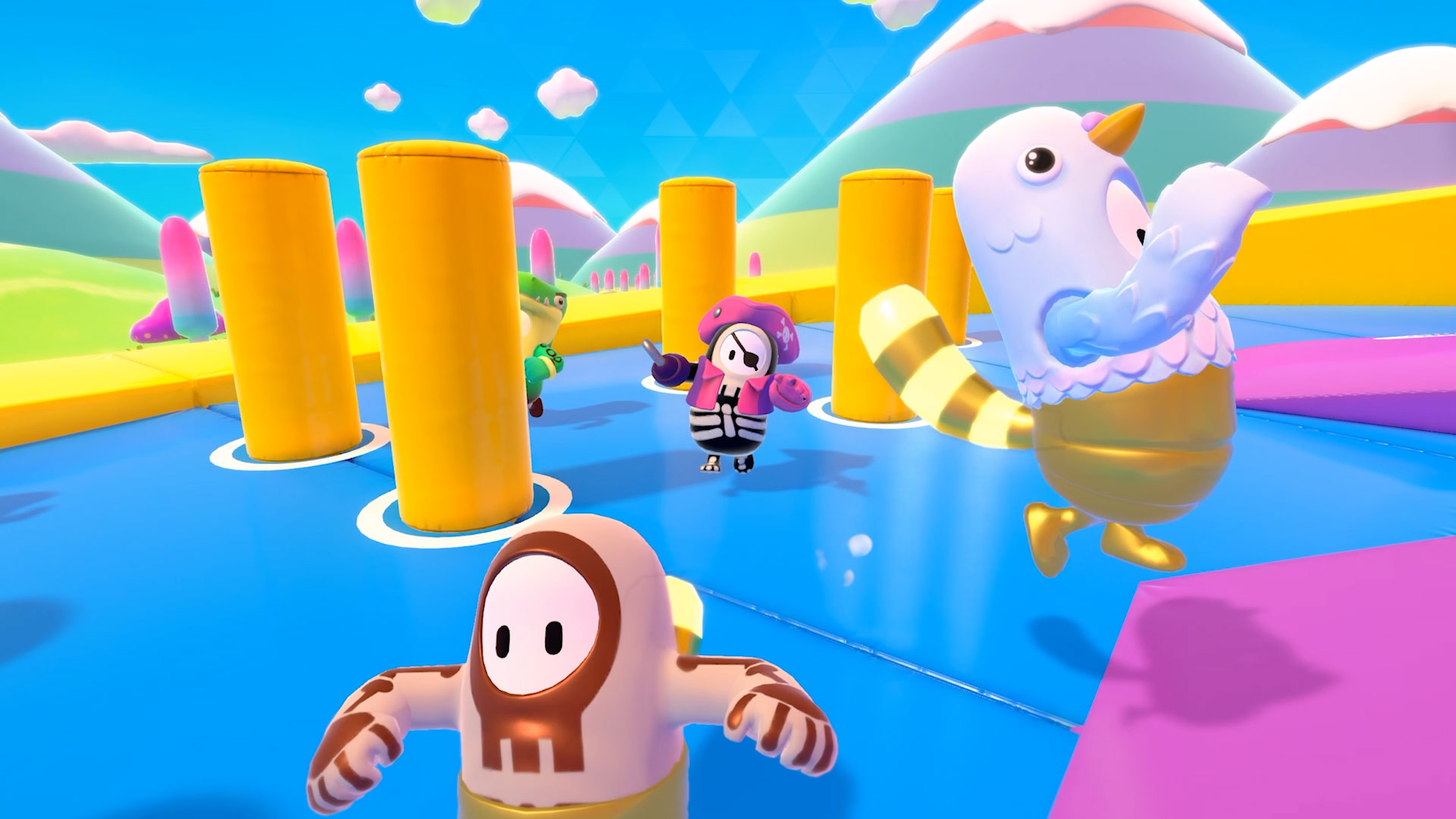
"The other really important thing is that it's funny to watch someone fall over and do something silly, but it's funnier when they're trying not to," Jackson adds. "Everyone is trying their hardest to get past these obstacles, and then they get taken out anyway. It's that mix of things – when you try to jump over something, you just miss it and someone just gets knocked over and flung into you and you get knocked into the void. That kind of sequence of actions is unexpected, right? You don't want to know it's coming. You want to be surprised by the reactions of things."
This all ties into what Walsh calls "comedic depth", where similar interactions play out differently each time. Because for a game like Fall Guys, the comedy has to sustain repetition. "In the way you might have strategic depth from a game like Starcraft or, say, PUBG, we need to make sure that the game is making you laugh in slightly different ways."
The response so far, from forum posts, tweets and the game's subreddit, suggests they've achieved their goal: in GIFs alone, Walsh says, they've seen dozens of hilarious moments for which they never actively planned. "But the fact that they're happening has really been the reward of us making sure that the character is truly physical and does things reactively," he says. "Rather than us pre-programming in reactions to things that get boring after you've seen them five or ten times."
Royale with cheese
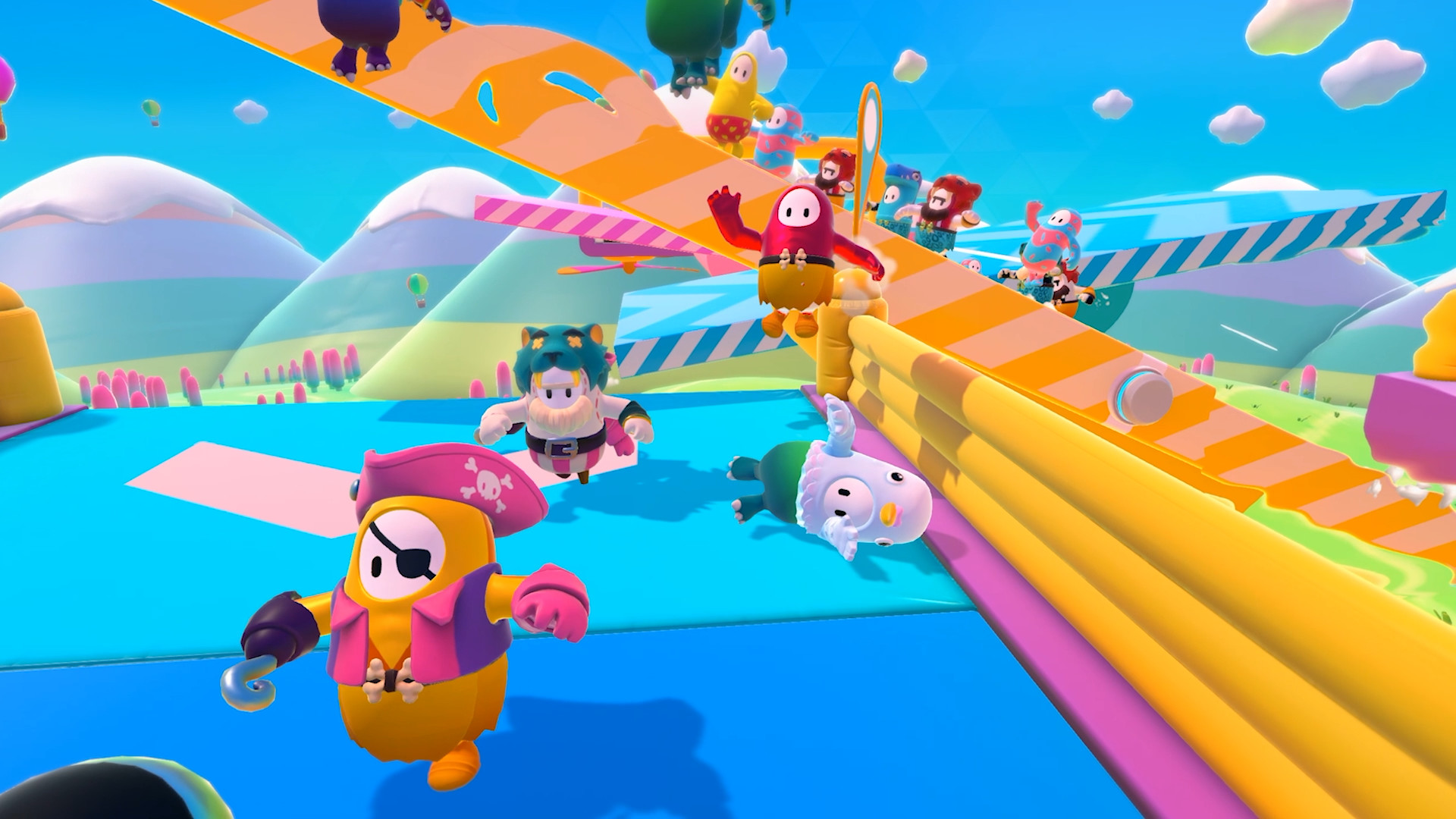
"A lot of development was identifying what was funny and then making sure that the characters could do that."
Joe Walsh
If Fall Guys delivers all the human and systemic unpredictability we've come to expect from the battle royale genre, there's one way it bucks the trend: rounds begin with up to 60 players rather than 100. This was, Walsh says, a discussion that went on for a long time; the game started with 100 ("basically because that's what everyone else was doing at the time") but it soon became apparent that this was too many.
"We struggled to make rounds that felt like they fit 100 people, because there wasn't really anything we could stop. We couldn't stop players all diving into the same door on Door Dash. And you'd get totally swarmed and find yourself stuck at the bottom of these huge piles."
At the same time, it was causing issues on the technical side. "We had the engineers on the project saying we were at our limit on how much we could do with the networking and the rendering," he adds. The team sat down and reevaluated the number of players, before running tests with 40 or 50 to see how playtesters would respond.
"We'd ask them how many players it felt like, and people were still sure there were 100 people in there. It felt more chaotic than it actually was." With fewer numbers came faster matchmaking, better graphics, improved networking and a more entertaining experience. "At the end of the day, the decision was actually very simple."
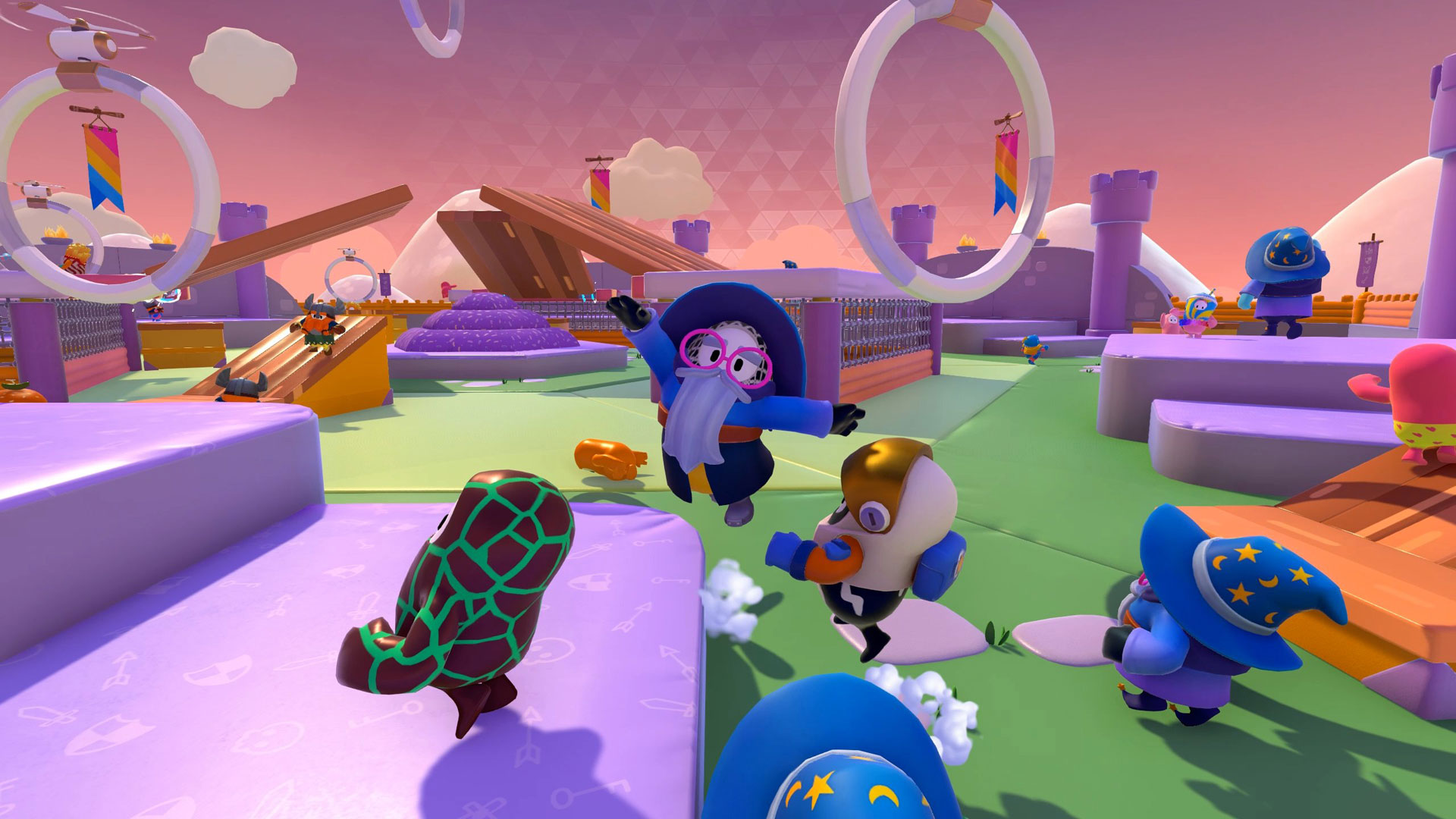
The number of players wasn't the only thing that was streamlined. One feature which was ultimately cut was a sprint mechanic. Not everyone agreed that it should be removed, but it soon became clear that it favoured a certain type of player. "The people who won most often were the people who were sprinting the most amount of time, or were feathering it as they went around corners, and it started to feel a little bit too much like a racing game."
There was also a shove move, which Walsh says made the game feel too combative. The existing grab allows players to grapple and struggle with one another, whereas a shove could potentially put you out of the game in an instant, with no realistic way to respond. "We even started asking: could you have a brace or a shield button to counter it? Like the rock-paper-scissors element of fighting games. But we realised we were going off track and should just focus on making things simple and accessible."
If Mediatonic knew it was onto something special, it wasn't until Fall Guys' first trade show appearance at PAX Australia that the development team realised how special. "It was the first time anyone outside of our team had really sat down and played it without being handheld through it. And we had these huge lines around the block, and I think that was the first moment where we realised it was fun and it was appealing to the right people."
The feedback they got was music to Walsh's ears. "There were parents coming up to us and saying, like, 'This is great – I've always wanted to play games with my kids, but I don't like guns or I can't do dual analogue shooting games.' And I think that started to plant that seed of excitement." But as development continued, the team's British cynicism kicked in. "We didn't want to count our chickens, even when we had preorders coming in and the beta was going. People were watching, but that didn't mean they were going to buy it."
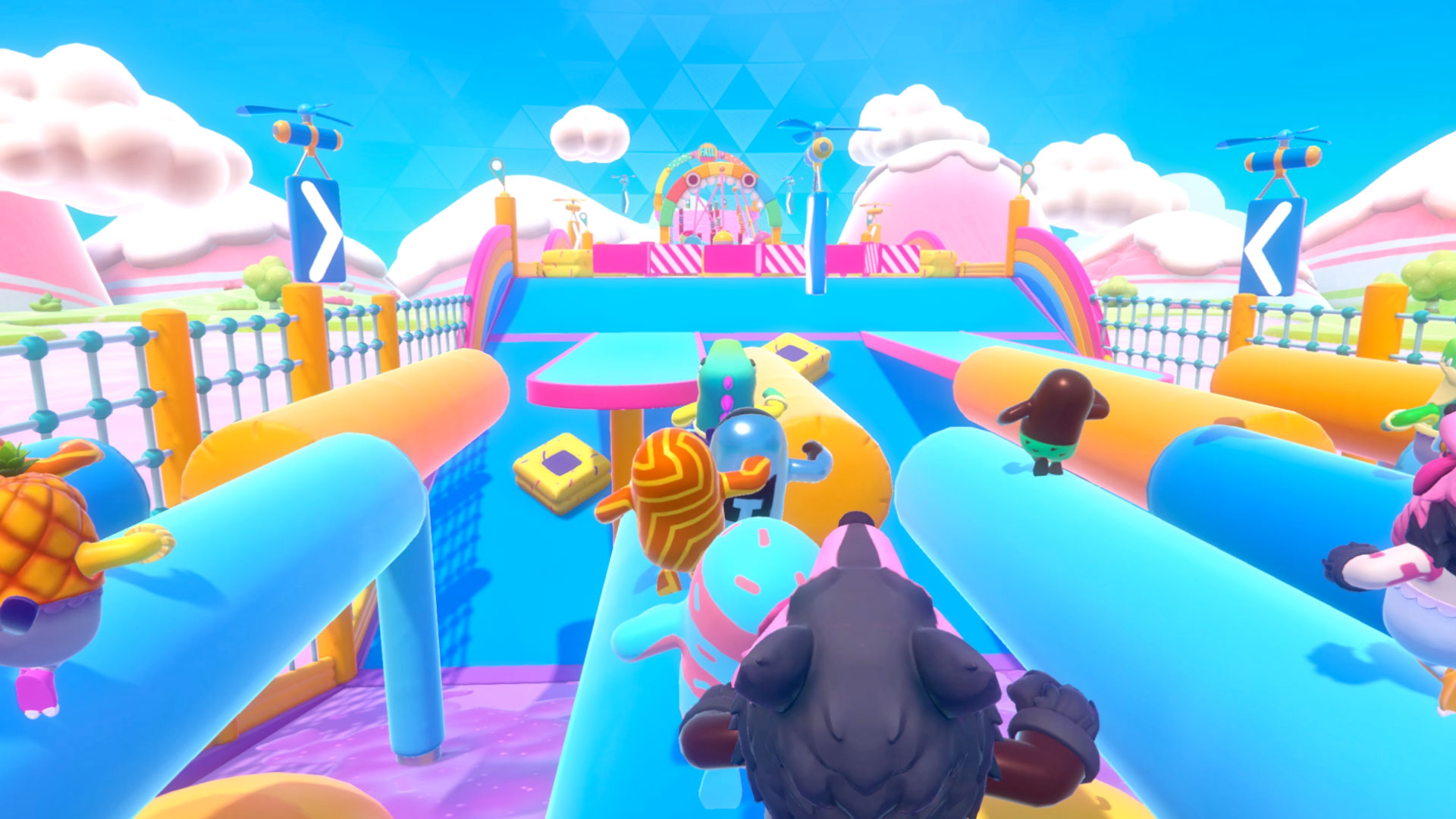
But they did – and then some. Within a week, two million copies had been sold on Steam, and millions more downloaded via PlayStation Plus. Its Twitch viewing figures reached an astonishing total of 23,000,000 hours. Inevitably, the servers became overloaded as Mediatonic scrambled to solve its network problems. Over successive weeks things began to settle down, but all signs point to this being more than a fad. The studio has plans to ensure Fall Guys isn't a flash in the pan; and it's paying close attention to player feedback.
"We have some content that we started during the polishing phase of the project. The first batch that people see is going to be stuff that's been started for a while and maybe doesn't necessarily reflect the community's opinion on things. But we also have stuff that we're starting right now where it's like, 'Okay, people want this type of level, people want that type of level.' So it's going to be a bit of a mixed bag going forward, but I'm really excited about some of the minigames that we've got coming soon."
True, it may not be a Fortnite killer – not least with Epic finding new ways to keep its battle royale fresh. But Fall Guys, you feel, might have the resilience to match its competitors – after all, when the servers fell over, it picked itself back up again and kept on going.
This feature first appeared in Edge Magazine. For more excellent features, like the one you've just read, don't forget to subscribe to the print or digital edition at Magazines Direct.
Edge magazine was launched in 1993 with a mission to dig deep into the inner workings of the international videogame industry, quickly building a reputation for next-level analysis, features, interviews and reviews that holds fast nearly 30 years on.



